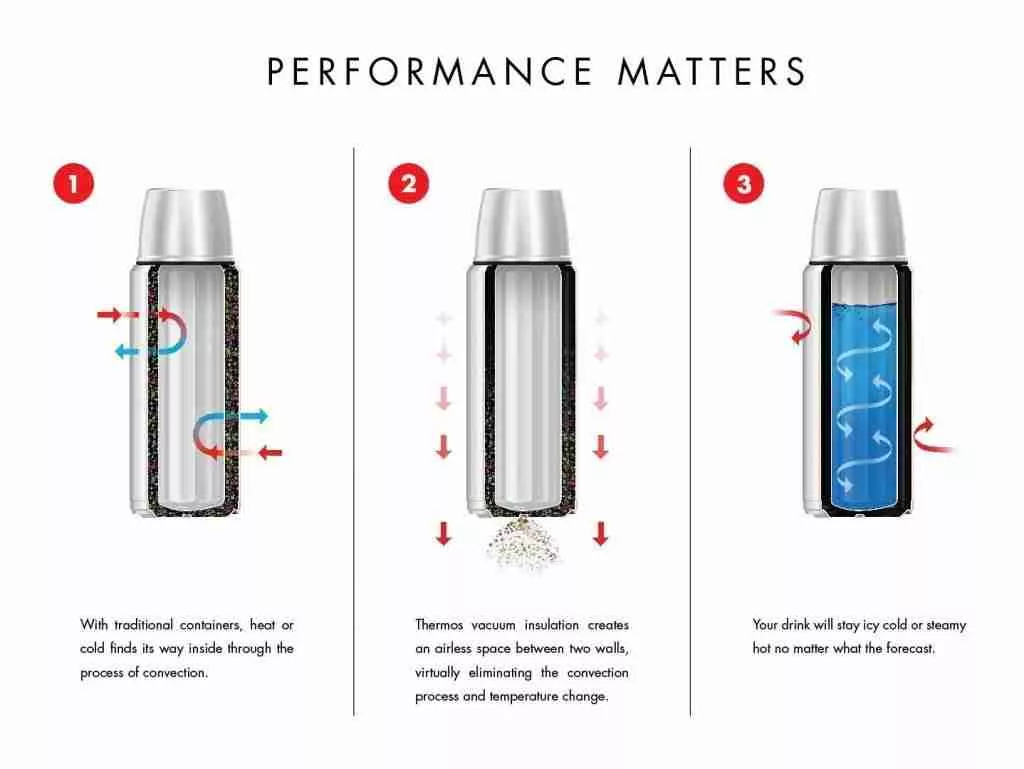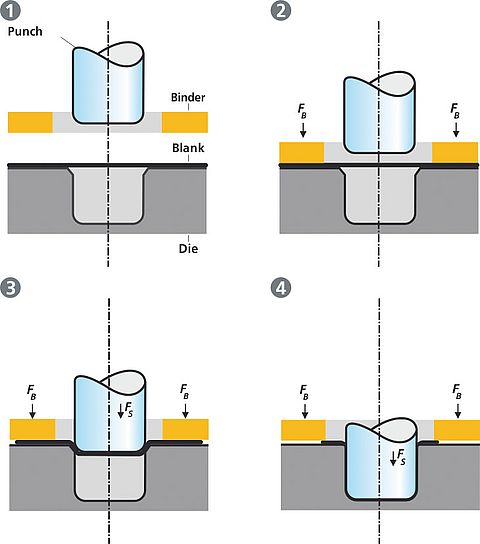What are thermal bottles?
Thermal bottles are bottles that can keep your drink hot or cold for a large amount of time. Unlike other bottles, such as ones that are made out of plastic or just solid metal, thermal bottles are made with two layers of the same material separated by a vacuum.

History
It all started in 1892, when the Scottish chemist Sir James Dewar discovered the vacuum flask. He had been working in cryogenics and needed to keep a chemical at a stable temperature. To do this, me took two flasks of different sizes, placed them one inside another, and sucked out all the air in the space between the two flasks. This vacuum prevented anything from traveling through, including heat. If the solution inside the flask was hot, heat would be prevented from passing through the space between the two flasks, causing it to lost heat very, very slowly. This was called the Dewar flask. Dewar's invention was extremely useful, but he did not patent it before Thermos, the popular bottle company, used Dewar's idea to improve their bottles. Dewar sued Thermos and lost, leading Thermos to become the company it is today.
When Dewar was making glass flasks for his experiments, he needed a professional glass blower to make sturdy flasks. This man was Reinhold Burger. Burger and his business partner, Albert Aschenbrenner, used Dewar's idea to create a domestic vacuum flask with a protective metal casing. They patented this flask. Burger and his business partner hosted a competition to name this new vacuum bottle, and the winner was 'Thermos'.
In 1906, an American businessman named William B. Walker, met Burger in Berlin while traveling. He learned about the Thermos bottle and realized how popular it would be in the US. He made a deal with Burger and created plans to import Thermoses into the US.
The first Thermos plant was made in 1907 in Brooklyn, New York. The company was called the American Thermos Bottle Company.
Although Thermos was the first brand to create insulated water bottles, many others are now in the market, such as Yeti, HydroFlask, and CamelBak.
So how are insulated bottles made?
Regular water bottles allow heat to pass through the walls through convection. When a vacuum is created between two walls, the convection process halts and the temperature ceases to change a high rate.
Steps to make an insulated bottle:
- Purchase raw material
- Cut the stainless steel tube.
- Use water swelling or deep drawing forming to shape the cylinder. This process involves a die pushing the sheet metal to conform to a certain shape.
- The mouth is formed using threads.
- The mouth of the stainless steel flask is matched to the blank and welded onto the blank.
- The vacuum is usually inserted into the bottom of the bottle and then sucks all the air between the two walls out. This takes around 4 hours.
- A vacuum test is taken to ensure that the flask is good quality.
- Electrolysis is used on the inside of the vacuum to clean the surfaces surrounding the vacuum. A layer of corrosive prevention material is also added.
- The surface of the outer wall of the flask is polished and decorated. Usually, the decoration are spray paint, logo printing, powder coating, or laser engraving.

